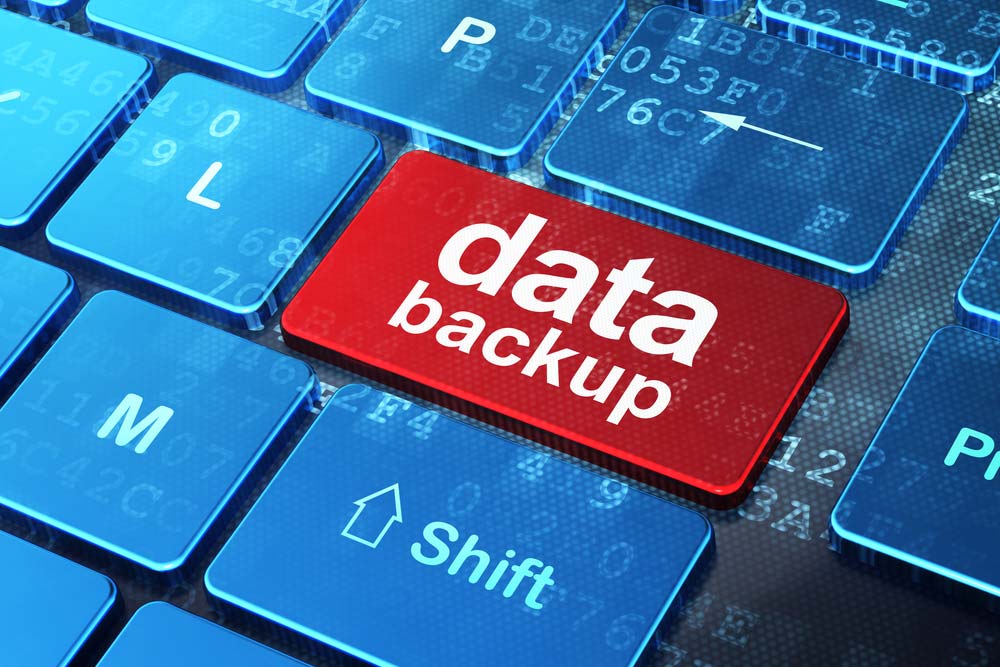Picking the perfect business backup
This is what to look for in a professional backup suite


Data backup may be one of the most boring parts of network management but it's one that needs proper attention. A data disaster could seriously disrupt your operations; even an accidentally deleted report or project can cost heavily in terms of lost productivity.
Unfortunately, many businesses are at risk. A report last year by IT services provider Beaming found that only 35% of UK companies stored their backup data outside of the office. More worrying, 17% of respondents said they didn't back up their data at all.
This cavalier attitude can't be down to lack of choice there are plenty of backup products on the market to suit businesses of all sizes. In this month's Business Focus, we test four products, from Arcserve, Iperius, Retrospect and Veritas. Each offers a wide range of features, with support for both local and cloud backups. We put each one through its paces in the lab to help you protect your business.
Easy as 3-2-1
A sound backup strategy is a simple one. The easier your protection regime is to understand and administer, the more likely it is to succeed. One popular approach is a "3-2-1" strategy, which means retaining three current copies of your data, backed up to two different types of storage media, with one copy stored off-site.
Whatever system you choose for backups, it's important to make sure it can be fully automated: a strategy that relies on users taking the time to manually perform backup jobs is one that's guaranteed to fail. All decent business backup packages include comprehensive scheduling features, so make sure you use them.
As well as full automation, the four products on review this month also support both full and partial (or incremental) backups. Full backups are exactly what they sound like, while incremental backups store only data that has changed since the last full backup was run. By not storing duplicate copies of files, this allows you to make huge savings on backup storage space.
What's more, if incremental backups are run frequently, they can complete very quickly (as not much data will have changed). This makes them ideal if you want more protection than a daily backup: they could be scheduled to run once an hour, or even more often to deliver close to real-time protection.
Sign up today and you will receive a free copy of our Future Focus 2025 report - the leading guidance on AI, cybersecurity and other IT challenges as per 700+ senior executives
Hybrid theory
Just as important as your backup strategy is choosing the right locations for your backed-up data. Under our "3-2-1" strategy, the first copy will be your live data; this can then be backed up to on-premises storage, giving you the second copy.
Naturally, though, you don't want this second copy to reside on the same system as the live data so you need to find a different home for it. A tidy solution is to equip a server with enough internal storage for it to host the backup software and simultaneously function as a backup vault. For larger amounts of data, NAS appliances are a practical choice for backup storage.
What about the third copy of your data, which should be kept off-site? There are specialist storage services that will house physical data archives for you, but cloud storage is a simpler and more cost-effective solution for most SMBs. Combining local and cloud backup is called a "hybrid" backup strategy, and it's an excellent way to protect your business against most disasters.
Check that your chosen backup software supports cloud storage and which providers are on its guest list. If it ticks all your boxes, you will be able to use the software to manage and automate your entire hybrid strategy.
Ransom notes
Data backup isn't just useful for recovering from hardware failures and human error. Ransomware attacks have sharply increased in recent years, and businesses that think they're too small to be of interest are sadly misguided. Backup software won't prevent such attacks, but if you do suffer a ransomware incident, a good set of backups could get you back up and running right away, without having to pay the ransom to decrypt your files.
The secret here is file versioning, which lets you step back through the changes made to individual files over the course of days, weeks and months. If an important file is encrypted, you can easily roll it back to the state it was in before the ransomware struck.Not that encryption is always a dirty word when it comes to backups. Businesses that process personally identifiable information need to ensure it can't accidentally fall into the hands of third parties, and most backup products let you encrypt your archives to provide peace of mind on that score.
The road to recovery
In working out your backup needs, there are two metrics to keep in view: your recovery time objectives (RTOs) and recovery point objectives (RPOs).
RTOs reflect how long a business is willing to go without access to its systems, applications and data. If your company lives or dies by its data, you'll need an RTO that's measured in hours, and that means investing in a backup strategy that guarantees fast restore services. It often makes sense to define multiple RTOs an email server may need to be restored more urgently than a database.The recovery point objective (RPO), meanwhile, defines the amount of data loss your business is willing to tolerate. If you can't afford to lose a working day's worth of data then you will need to run more than one backup per day.
Once your data protection solution is up and running, it will doubtless be a big relief but don't relax yet. Any backup system must be regularly tested to ensure that files, applications and systems can be restored as needed, and that your RTOs and RPOs are achievable.

Jane McCallion is Managing Editor of ITPro and ChannelPro, specializing in data centers, enterprise IT infrastructure, and cybersecurity. Before becoming Managing Editor, she held the role of Deputy Editor and, prior to that, Features Editor, managing a pool of freelance and internal writers, while continuing to specialize in enterprise IT infrastructure, and business strategy.
Prior to joining ITPro, Jane was a freelance business journalist writing as both Jane McCallion and Jane Bordenave for titles such as European CEO, World Finance, and Business Excellence Magazine.
-
 Trump's AI executive order could leave US in a 'regulatory vacuum'
Trump's AI executive order could leave US in a 'regulatory vacuum'News Citing a "patchwork of 50 different regulatory regimes" and "ideological bias", President Trump wants rules to be set at a federal level
-
 TPUs: Google's home advantage
TPUs: Google's home advantageITPro Podcast How does TPU v7 stack up against Nvidia's latest chips – and can Google scale AI using only its own supply?